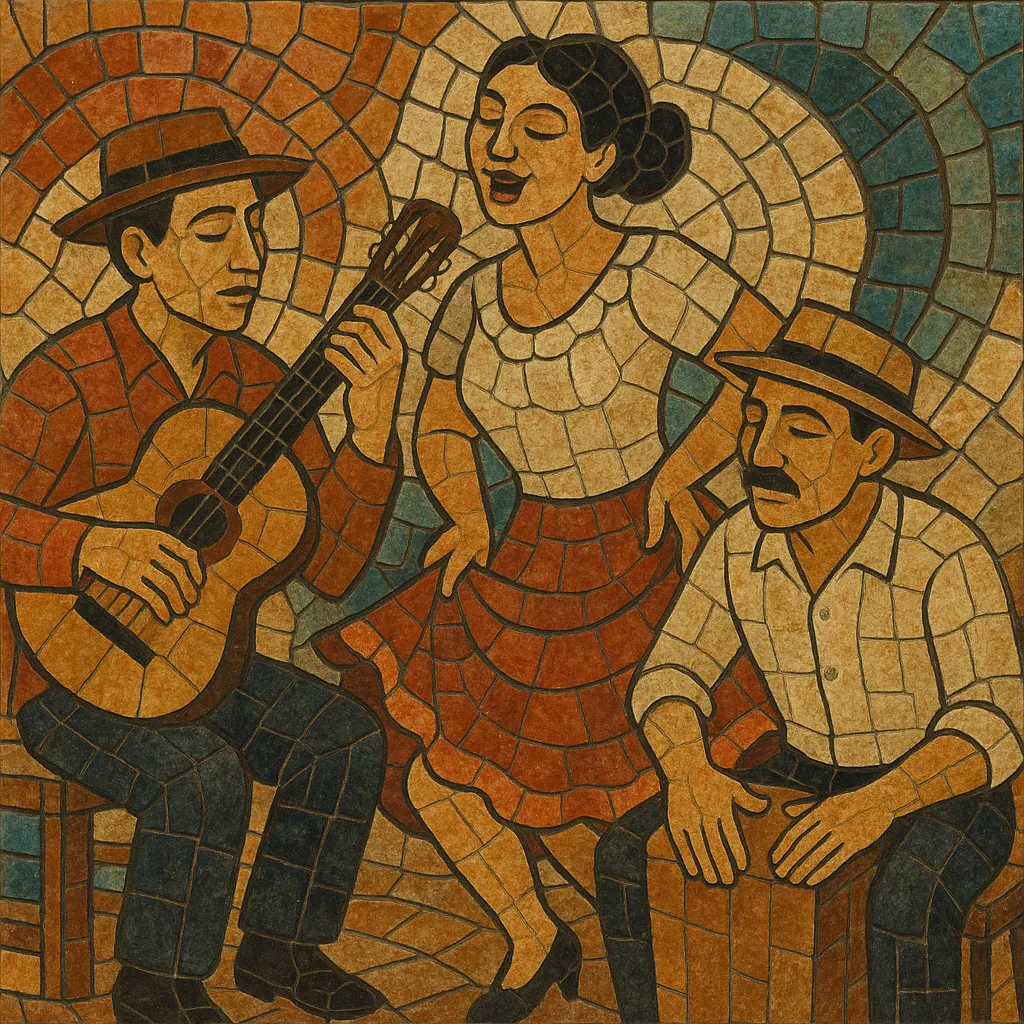Polka peruana (Peruvian polka) is the local, criollo adaptation of the European polka that took root in coastal Peru—especially Lima—during the 19th century.
It keeps the brisk 2/4 dance pulse of the polka but blends it with Afro‑Peruvian percussion, guitar-centric accompaniments, and a witty, street-wise lyrical sensibility associated with música criolla.
Performed in peñas and family gatherings as much as on stage, it is lively, humorous, and socially observant, often celebrating Limeño neighborhoods, everyday romance, and playful banter.
While closely related to other criollo forms like the vals peruano and marinera in performance context and repertoire, polka peruana is distinguished by its faster duple meter, driving cajón patterns, and buoyant, sing-along refrains.
European polka fashions spread rapidly across Latin America in the mid‑1800s. In coastal Peru—particularly Lima—local musicians absorbed the dance into the emerging criollo milieu, where Spanish guitar practice, African-descended percussion, and urban salon culture were already intersecting. By the 1860s, a distinctly Peruvian take on polka coalesced: brisk 2/4 tempos were retained, but the groove was colored by cajón, handclaps, and the agile, syncopated guitar language of the coast.
As música criolla became an urban emblem of Limeño identity, polka peruana settled alongside vals peruano and marinera in the shared repertoire of conjuntos criollos. Recordings and radio broadcasts in the first half of the 20th century helped standardize forms: two guitars (often first/second roles), bass or low guitar lines implied on the second guitar, and cajón/hand percussion driving the dance feel.
From the 1940s through the 1970s, peñas and stages in Lima propelled polka peruana to mass popularity. Conjuntos such as Los Embajadores Criollos and vocal stars associated with the criollo movement recorded numerous polkas, making the style a staple of national festivities and neighborhood gatherings. The lyric themes—romance, picaresque humor, local characters—cemented its place in popular memory.
Despite the rise of other popular currents (salsa, cumbia peruana, rock), polka peruana endures in peñas, on radio specials, and during Día de la Canción Criolla. Contemporary criollo interpreters continue to perform classic polkas, preserving the agile guitar and cajón interplay while updating stagecraft and arrangements for modern audiences.


